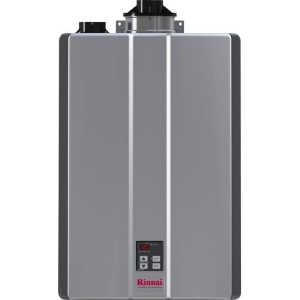- Home
- Water heater troubleshooting guide
- How to Repair Plumbing Crossover
Plumbing Crossover
Troubleshooting Guide
How to find and fix the plumbing crossover and problems when the hot water is not hot enough, or the water heater doesn't produce enough hot water.
Every house, either new or old, has two separate water lines; hot and cold. When the cold water is heated inside the water heater, it produces hot water and transferring it to hot water taps, washing machines, dishwashers, or any other applications where it is needed. It can be used in residential and commercial applications.
What is the recommended temperature of hot water?
The thermostat controls the water temperature inside the heater, and it is usually set in a range from 100 F to 140 F (which is the maximum recommended). The recommended temperature is around 120-125 F.
What if something goes wrong?
If you require professional assistance, contact your local water heater expert! Get FREE estimates here!
The temperature of hot water should be stable but could fluctuate - only temporarily. If hot water is not hot enough, it is lukewarm or even cold for a long time; something is wrong either with the water heater or plumbing.
There are several reasons why the water heater is not producing hot water, and some are described in the troubleshooting guide.
If everything is OK with the water heater, but hot water is not hot enough, or there is not enough hot water, the problem might be in the house plumbing, and the most common issue is the plumbing crossover.
What is plumbing crossover?
Plumbing crossover is a situation when water flows into the hot water system where it mixes with hot water, and once diluted, it provides lukewarm water. The location of the plumbing crossover (assuming the plumbing was done correctly and there are no plumbing cross-connections) is usually inside one of the faulty mixing valves (such as those found in washing machines) or single-handle faucets.
A faulty mixing valve will show no signs of a problem unless you open the hot water tap.
If the plumbing system was not set correctly, the crossover symptoms would help you locate the problem fast. However, if the system was working correctly and suddenly not, then it could take some time and hard work before you find the location of the problem and fix it.
How to check and locate the plumbing crossover
Before doing anything, check the dip tube. The dip tube is long, and when installed, it is only a few inches away from the bottom of the tank. So cold water from the plumbing goes right to the bottom section of the tank.
If the dip tube is broken and its length gets shorter, then what could happen is that cold water would get into the upper part of the tank. So, instead of mixing with the rest inside the tank, the incoming cold water will go right inside the hot water outlet, producing lukewarm water at the tap or a shower.
Locate the shut-off valve installed on the cold line and close it.
Inside the laundry room or even garage, you can usually find a faucet with two separate spigots; one for hot and the other for cold water.
Open the hot water tap and look at what's happening. The typical situation is when the hot water stops running entirely after some time. If it doesn't, and it turns cold, you have a situation with the plumbing crossover where the cold water enters the hot water plumbing system.
If the water stays hot and continues running with a slower flow rate, the problem is with the defective shut-off valve that allows cold water to enter the water heater tank. The faulty shut-off valve must be replaced.
Once you figure out that there is a problem, you have to locate where the mixing occurs, which might be time-consuming. This is one of the ways:
First, check if the plumbing cross-connection is happening in the washing machine. Shut off the service valves to the washer while the hot water tap is open. If the water stops flowing at the hot water tap, the mixing valve on the washing machine is the cause.
If the washing machine runs appropriately and the mixing valve is not causing any issues, check every faucet that has a single handle by touching the pipes that run to that tap. If the pipes of one fixture are both cold, then that faucet is the cause of the plumbing crossover and must be fixed.
Conclusion
Plumbing crossover is mostly unpleasant during the shower, hand, and face washing, but having the water lukewarm when we need it hot, especially when washing the dishes, could lead to unsanitary conditions and health risks. Trying to find the crossover can be difficult and time-consuming, and it is often recommended to contact a plumber.
Related
- Home
- Water heater troubleshooting guide
- How to Repair Plumbing Crossover



